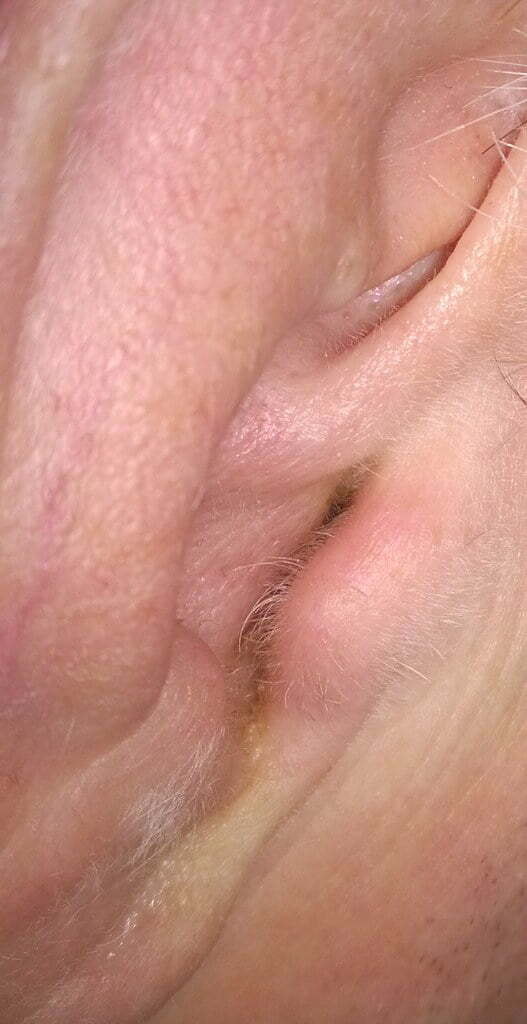The Dynamic Duo: Understanding the Relationship Between Ear Wax and Infection Prevention
Last Updated on 3rd May 2024 by Admin
Ear wax, also known as cerumen, is a natural substance produced by the glands in the ear canal. It serves multiple purposes and plays a crucial role in maintaining the health and functionality of our ears. Many people view ear wax as a nuisance, but it is actually a protective barrier against infection-causing bacteria, fungi, and other microorganisms. In this article, we will delve into the fascinating relationship between ear wax and infection, shedding light on why this dynamic duo is an essential part of our auditory system.
The Purpose of Ear Wax
Ear wax serves as a vital defense mechanism in the ear canal. Its primary function is to trap dust, debris, and foreign particles that enter the ear. Throughout our daily activities, these particles can easily find their way into our ears, potentially causing harm or discomfort. However, ear wax acts as a natural barrier, preventing these particles from reaching the delicate structures of the inner ear.
Moreover, ear wax acts as a lubricant for the ear canal, preventing dryness and itchiness. It also plays a role in keeping the skin in the ear canal moisturized, preventing irritation and inflammation. Additionally, ear wax contains antibacterial properties, effectively fighting off harmful microorganisms that may enter the ear.
Benefits of Trapping Dust and Debris
- Ear wax traps dust, debris, and foreign particles, preventing them from reaching the delicate structures of the inner ear.
- By trapping these particles, ear wax reduces the risk of infection and potential damage to the ear.
- The presence of ear wax helps maintain the cleanliness of the ear canal, promoting overall ear health.
Role in Lubrication and Moisturization
- Ear wax acts as a lubricant for the ear canal, preventing dryness and itchiness.
- It helps keep the skin in the ear canal moisturized, reducing the chances of irritation or inflammation.
- The lubricating properties of ear wax aid in the natural cleaning process of the ear canal, facilitating the removal of dead skin cells and excess debris.
Antibacterial Properties
- Ear wax contains antibacterial properties that help fight off harmful microorganisms.
- These properties inhibit the growth and proliferation of bacteria and other potential infection-causing agents.
- The presence of ear wax with antibacterial properties reduces the risk of ear infections and supports overall ear health.
The Production of Ear Wax
The production of ear wax is a continuous and natural process. The glands in the ear canal produce cerumen, which gradually makes its way from the inner ear to the outer ear. As it moves, it collects dust, debris, and dead skin cells, forming a protective layer within the ear canal.
The amount and consistency of ear wax can vary from person to person due to various factors. Some individuals produce more ear wax than others due to genetic factors or underlying conditions. Additionally, factors such as age, climate, and skin type can influence the production and composition of ear wax.
Factors Affecting Ear Wax Production
- Genetic Factors: Some individuals may naturally produce more ear wax due to genetic predispositions.
- Underlying Conditions: Certain medical conditions, such as eczema or seborrheic dermatitis, can influence the production of ear wax.
- Age: The production of ear wax tends to decrease with age, leading to drier ear canals.
- Climate: Dry climates can result in decreased ear wax production, while humid climates may increase production.
- Skin Type: Individuals with excessively dry or oily skin may experience variations in ear wax production.
Understanding Infections
Ear infections, also known as otitis, occur when bacteria or viruses enter the ear and cause inflammation or infection. These infections can affect different parts of the ear, including the outer ear, middle ear, or inner ear. The symptoms of an ear infection can range from mild discomfort to severe pain, and if left untreated, they can lead to complications and potential hearing loss.
Types of Ear Infections
- Outer Ear Infection (Otitis Externa): This type of infection affects the outer ear canal and is commonly known as “swimmer’s ear.” It is often caused by water exposure or excessive moisture in the ear, creating an environment conducive to bacterial growth.
- Middle Ear Infection (Otitis Media): Otitis media occurs when bacteria or viruses invade the middle ear, resulting in inflammation. It is more prevalent in children due to the anatomical characteristics of their Eustachian tubes.
- Inner Ear Infection (Otitis Interna): Otitis interna is a rare condition characterized by the inflammation of the inner ear. It is typically caused by a viral infection and can result in severe dizziness, balance problems, and hearing loss.
The Relationship Between Ear Wax and Infections
Ear wax plays a crucial role in preventing ear infections. Its sticky texture and antimicrobial properties help trap and inhibit the growth of bacteria and other microorganisms. By doing so, ear wax acts as a protective shield, reducing the risk of infection.
However, excessive ear wax can sometimes contribute to the development of infections. When ear wax accumulates and becomes impacted, it can create an environment that promotes bacterial growth. This can lead to blockage of the ear canal, resulting in discomfort, hearing loss, and an increased risk of infection.
The Protective Role of Ear Wax
- Ear wax acts as a sticky barrier that traps bacteria, fungi, and other microorganisms, preventing them from entering the ear.
- Its antimicrobial properties help inhibit the growth of harmful bacteria and reduce the risk of infection.
- The presence of ear wax supports the overall health of the auditory system by protecting the delicate structures of the ear.
Potential Risks of Excessive Ear Wax
- Accumulation of ear wax beyond normal levels can lead to blockage of the ear canal, causing discomfort and impacting hearing.
- Blocked ear canals create a favorable environment for bacterial growth, increasing the risk of infections.
- Excessive ear wax can contribute to the development of swimmer’s ear (outer ear infection) due to moisture retention.
Maintaining Ear Health
Proper ear hygiene is essential for maintaining ear health and preventing infections. Here are some tips to keep in mind:
- Avoid using cotton swabs: Contrary to popular belief, using cotton swabs to clean the ears can do more harm than good. They can push the ear wax deeper into the ear canal, potentially leading to impaction or injury.
- Practice gentle cleaning: If you feel the need to clean your ears, do so gently. Use a warm washcloth to wipe away any visible ear wax on the outer ear. Remember, the ear canal is self-cleaning, and excessive cleaning can disrupt its natural balance.
- Seek professional help: If you experience symptoms of an ear infection or have concerns about excessive ear wax, it is important to consult a healthcare professional. They can provide appropriate guidance, perform necessary examinations, and suggest suitable treatment options.
Conclusion
Ear wax and infection have a unique relationship that highlights the importance of ear wax in maintaining ear health. While ear wax acts as a protective barrier against infection-causing microorganisms, excessive accumulation can potentially contribute to infections. By understanding the purpose of ear wax and practicing proper ear hygiene, we can promote a healthy auditory system and reduce the risk of ear infections. Remember, when it comes to ear health, the dynamic duo of ear wax and infection prevention plays a vital role.
FAQ
Q: What is the purpose of ear wax?
A: Ear wax serves as a defense mechanism by trapping dust, debris, and foreign particles, preventing them from reaching the inner ear. It also acts as a lubricant, moisturizing the ear canal and preventing irritation and inflammation. Ear wax contains antibacterial properties, fighting off harmful microorganisms.
Q: How does ear wax prevent infections?
A: Ear wax acts as a protective barrier, trapping bacteria, fungi, and other microorganisms, preventing them from entering the ear. Its antimicrobial properties inhibit the growth of harmful bacteria, reducing the risk of infection. Overall, ear wax supports the health of the auditory system.
Q: Can excessive ear wax lead to infections?
A: Yes, excessive ear wax can contribute to the development of infections. When ear wax accumulates and becomes impacted, it creates an environment that promotes bacterial growth. This can lead to blockage of the ear canal, discomfort, hearing loss, and an increased risk of infection.
Q: How can I maintain ear health?
A: To maintain ear health, avoid using cotton swabs as they can push ear wax deeper into the ear canal. Practice gentle cleaning by using a warm washcloth to wipe away visible ear wax on the outer ear. Remember that the ear canal is self-cleaning, and excessive cleaning can disrupt its natural balance. If you have concerns or experience symptoms of an ear infection, consult a healthcare professional for appropriate guidance and treatment options.







